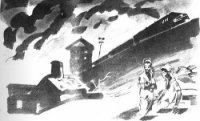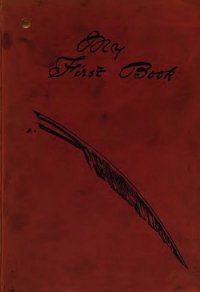Operation Nemesis: The Assassination Plot that Avenged the Armenian Genocide - Bogosian Eric (мир книг .txt) 📗
There are several collections of survivor interviews as well. The following is from Verjine Svazlian’s vast volume of testimony. Svazlian spent fifty-five years compiling testimony by Armenian survivors, most of whom were small children at the time of the genocide. They are damning in their details.
Smbyul Berberian was seven years old when he was deported from Afion-Garahissar:
We heard afterwards that, together with seventeen other Armenian young men, they had massacred them by night and had thrown them under the bridge. Thus, when we were deported, there were no males left in our family. They took away my five aunts in Der Zor, later they cut off their heads, impaled their heads with their bayonets to show them to us and then they threw their corpses in the Euphrates. We found only half of the body of my mother’s aunt. My mother buried her in the earth. They massacred everyone. My mother wept so much that she lost her eyesight.
Eva Choulian, the sole survivor of her village near Zeitoun, was thirteen:
The Turks came and drove us all out of the village. They were forcing us to march with whip strokes. They tied our hands behind.… They disrobed us totally and we stood naked as the day we were born. Then they broke one’s hand, another’s arm, still another’s leg with axes and daggers. Behind us a little boy, whose arm was broken, was crying and calling for his mother, but the mother had already died by an axe.… [T]hey came in the morning, assembled us and started once more to kill and drop the bodies in water. Below the cave, the River Khabur was flowing. They cut someone’s head, another’s leg, still another’s hand and all these human parts were piled one upon another on the ground. Some were not yet dead, but had their bones shattered or their hand severed. Some were crying, others squeaking. There was the odor of blood on the one hand and hunger on the other. People who were alive started to eat the flesh of the dead.
Trvanda Mouradian, born in Kharpert in 1905, was ten years old:
They confined all the young people in a cave-like place, poured kerosene from an opening in the roof and set fire to them. Then they gathered all the women and smashed their heads with stones. They killed my mother and grandmother with stones too. They separated the children like lambs from their mother-sheep. I had a three-year-old sister; they took her also, together with other children near the Euphrates River bridge, cut their throats and threw them in the river.
Megerdich Karapetian, born in Diyabekir in 1910, was six years old:
They separated us, the children, and took the adults towards the valley and made them stand in a line. There were about three to four hundred adults and we, the children, were nearly as many. They made us sit on the green grass, and we didn’t know what was going to happen. Breaking from the line, my mother came several times to us, she kissed and kissed us and went back. We, my elder brother, I and my one-year-old brother, saw from afar a line of women moving forward; our mother was among them. On coming out of our house, mother was dressed in her national costume—a velvet dress, embroidered in gold thread; her head was adorned with gold coins; on her neck was a gold chain; twenty-five gold coins were secretly sewn inside her dress on both sides. When mother came for the last time and kissed us madly, I remember she was clad only in her underwear; there were no ornaments, no gold and no velvet clothes. We, the children, were unaware of the events happening there.30
Ottoman authorities forbade Germans and missionaries to photograph the victims. To reinforce this edict, when passenger trains traveled through the worst regions, the windows were blacked out. Any shop or studio that developed photographs was ordered to confiscate and report photos of the deportees or the corpses.
Although my grandfather blamed the killings on “the Turks,” this is an oversimplification. While governmental entities organized most of the killing, many of the attacks on Armenians were also fueled by a combination of tribal hegemony, religious antipathy, and desperate poverty. Kurds, gendarmes, soldiers, and local Muslims were all encouraged to take part in the slaughter.
There was, however, one group that had no such larger motivation, and whose participation in the genocide was utterly malicious and mercenary. In fact, its ranks were fortified with convicted felons released from prison specifically for the purpose of intensifying the sadistic terror of the killings. This group, which took orders directly from the Committee of Union and Progress, was the “Special Organization” (Teshkilati Mahsusa), a paramilitary network under the direct command of Dr. Behaeddin Shakir. The local populations knew them as chetes.
The Special Organization was formed during the Balkan Wars of 1912 and 1913 to carry out secret operations, like committing sabotage and fostering terror. These chetes were guerrilla fighters, dedicated to doing whatever was necessary to force populations to abandon territory. As the genocide commenced, the Special Organization was expanded to include in its duties the rounding up and destruction of the Armenian population. Toward these ends, some thirty thousand prisoners were released from custody specifically to boost the violent capacity of these outfits. Many of these men relished fearsome, brutal sadism. Working in tandem with the Kurdish militia, the Special Organization was responsible for much of the dirty work of the genocide.
Slitting throats, gouging out eyes, beheading, and torture—these were hallmarks of the chetes. They tore out teeth, hair, beards, and fingernails, and sliced off noses and ears. Victims were whipped raw with animal-hide whips. Locked into barns or churches, many victims were burned alive. Rape was followed by rudimentary crucifixion and impalement. Young women were stripped, doused with kerosene, and forced to dance as they burned.
In addition to the horrors perpetrated by the Special Organization, much of the worst violence against the Armenians was dealt out by Kurds, a Muslim people who shared parts of the Armenian homeland in eastern Anatolia. When the Armenians were uprooted and forced on long marches through Kurdish territory, it served the purposes of the Turkish government in Constantinople to encourage the nomadic Kurds to harass, rob, and injure, and often kill, the hapless Armenians passing through.31 The population of eastern Anatolia, whether Muslim or Christian, was extremely impoverished at this time. The Muslims were told again and again that the Armenians were terrorists, that they were infidels. That they were the root cause of their poverty. Muslims were encouraged to steal from or murder those Armenians, especially those who came from distant towns. They would be doing God’s work. Among these intensely poor populations, some were bound to avail themselves of virtually free household goods, clothing, and even small children taken as “servants.”
Muslim refugees from the former Ottoman territories which had recently been “freed” from the empire—the muhacirs—also participated in tormenting the deported Armenians. Originally from Serbia, Bulgaria, and the Crimea, they had been terrorized and forced to flee from their provinces to avoid the massacres of the 1850s and the Balkan wars. Having lost everything, in some instances having seen their families murdered, the muhacirs migrated to Muslim Turkey. They felt they had a right to whatever they could get their hands on, whether it be possessions or homes, because they were refugees themselves. From the government’s point of view, these returning “Turks” could be put to good use. They could help unify the country, “Turkify” the country, make the nation “one,” and end the everlasting problem of the restless minority population. They could assume ownership of property, housing, and land that had formerly belonged to the missing Armenians. This substitution of Muslims for Christians in Anatolia was integral to the CUP solution to the Armenian problem.




